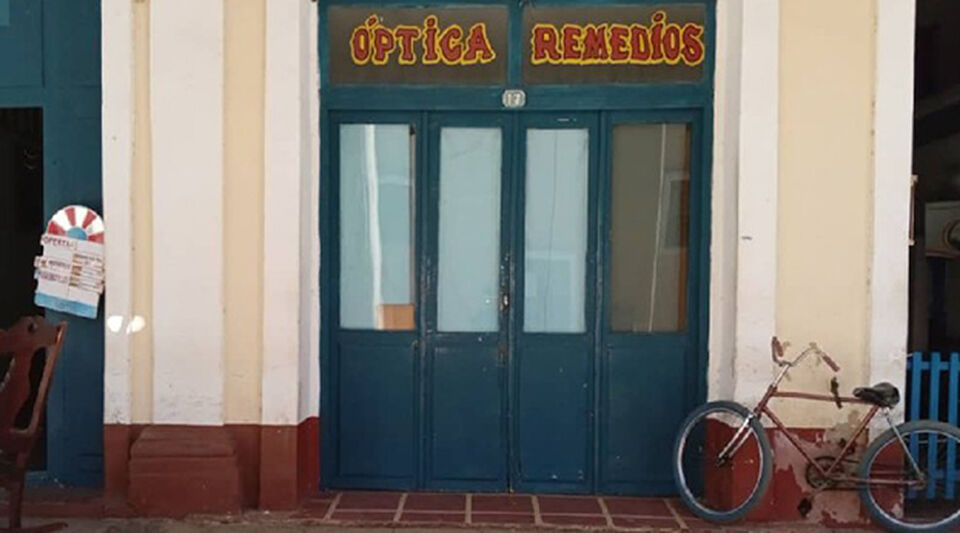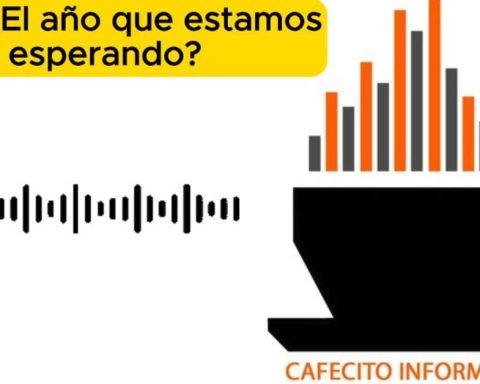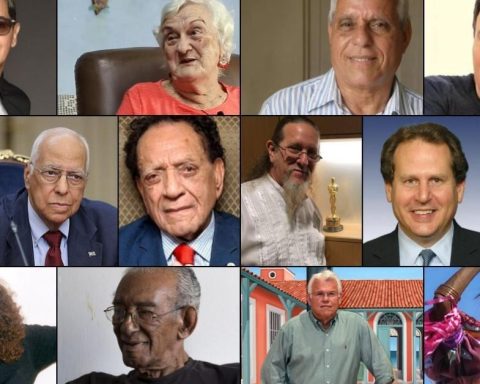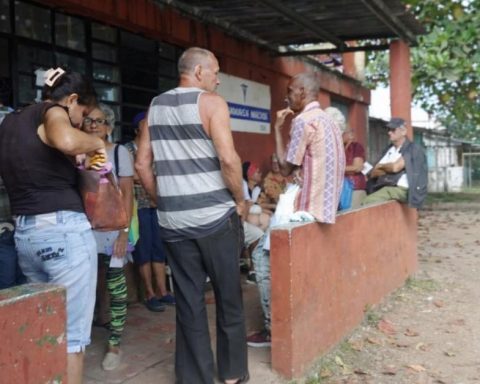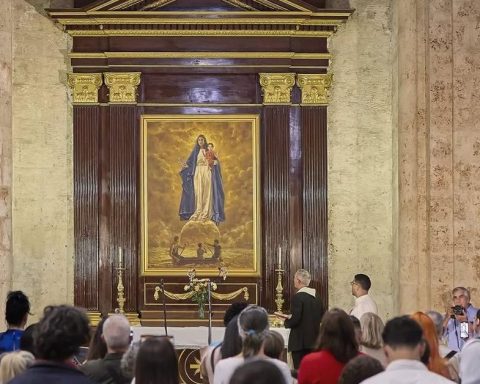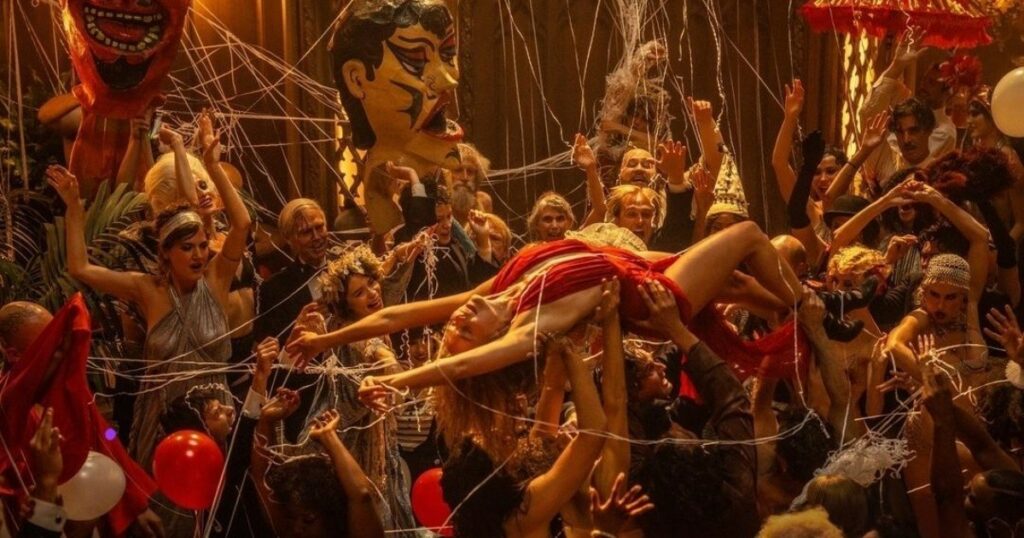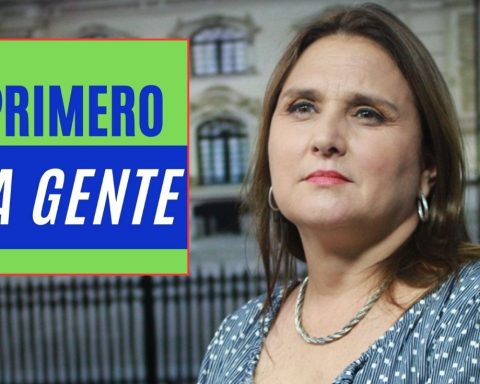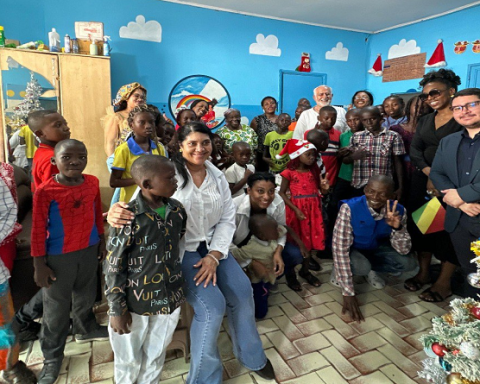Each Cuban optician contains a collection of useless screws, glass and legs. Technicians have not been able to carry out their work normally for years and no one is surprised by the lack of supplies or empty showcases. At the main optical store in Santa Clara, located a few meters from Vidal Park, at number 57 Cuba Street, customers do not come in search of new glasses, but rather to repair armor with too many years of use.
When there is nothing else to do, the workers drop into the establishment’s seats, go out to smoke a cigarette or walk through the corridors. The usual in any center administered by the State.
Everything changes radically when a shipment, usually small, of crystals arrives. Nobody knows who alerts whom, or what are the mechanisms by which people find out, but the truth is that in a very short time a queue forms, the shouting and shoving begin, and the optics go back into action for a few seconds. days.
Very few lucky ones return home with the voucher that will allow them to pick up their glasses weeks later. It is not enough to have the prescription supplied by an optometrist or that, finally, the optician has the lenses that the patient needs. The interested party must also wear armor.
As in everything, here too “inventions” and improvisations proliferate. Although it is possible that a relative in the US has sent the “skeleton” of the glasses, it is also common to ask the technician to set the new lenses on old sunglasses or armor imitations, formed with broken or leftover pieces.
“Nothing has come here for a while, and what people are doing is ordering what they need abroad or buying glasses to which the glasses can be attached”
“We’ll change the windows and that’s it,” the Santa Clara optical workers guaranteed Mariela, a Cuban who has been waiting for this opportunity for months. “Nothing has come in here for a while, and what people are doing is ordering what they need abroad or buying glasses to which the glasses can be attached. For now, however, there are glasses,” he tells 14ymedio.
A few days ago, Mariela went out in search of armor and went to the only place where she knew she would find it: private establishments. Whether in the houses where, with a license to sell clothes, everything is sold, or in the labyrinthine candonga -in the immediate vicinity of the hospital zone-, there is always someone who has a pair of glasses for sale.
After walking through various parts of the city, he came across a stall where they exhibited, in a small showcase, some sunglasses that he liked. They were of good black plastic and, he reckoned, it would not be difficult to adapt them for their new use. Although her price made her doubt for a moment – they asked her for 1,000 pesos for her glasses – she ended up buying them and went, at full speed aboard a very expensive rickshaw, to the optician’s.
The technician evaluated the armor and agreed. These glasses, the man reported, can be fitted with lenses without any problem. Mariela breathed a sigh of relief and paid 150 pesos. “Even the crystals of the State went up in price,” she laments.
Pedro, an elderly resident of Santa Clara affected by myopia, has gone through a whole purgatory to acquire a pair of glasses. His disease has damaged one of his eyes more than the other, so finding the necessary crystals has been difficult. The only solution he found was to ask his son, who lives in Spain, for them. “But it will take two months to arrive and myopia advances,” Pedro complains.
“I don’t know how many times I’ve gone to have my eyesight graduated and I’ve already had the prescription in hand, but when I go to the optician’s the normal way, it’s useless,” explains the man.
“I don’t know how many times I’ve gone to have my eyesight graduated and I’ve already had the prescription in hand, but when I go to the optician’s the normal way, it’s useless,” explains the man. “According to my ophthalmologist, I will have to wear special lenses for life, because I do not qualify for an operation.
Pedro was also diagnosed with the beginning of keratoconus, a disease of the cornea that progressively degenerates vision. “Also, since he was eight years old he has been wearing glasses,” he says.
The lack of materials is just the tip of the iceberg on the optical issue. The long blackouts leave the machines without working and without light it is not possible to work on a substance as delicate as glass. The problem is not limited to Santa Clara, where it is almost impossible to buy armor. The small municipal establishments, dilapidated and without the State worrying about their supply, have an even more precarious operation.
Years ago, those who could not get their glasses in Santa Clara traveled to towns like Camajuaní, Remedios and Caibarién, whose opticians were less in demand, to achieve the difficult combination of glasses, crystals and a place with electricity.
“In all places the answer was the same: neither armor nor crystals. I ended up paying 2,500 pesos: nothing less than my retiree salary,” he lamented.
However, no one goes to the Camajuaní optician anymore – in front of the park of the town’s Catholic temple – empty for most of the day. It’s been months since the only technician available hasn’t had new resources and the only job of the clerk is to receive old armor, to see if it’s worth mending it.
Thirty kilometers from there, in Remedios, was one of the best-stocked opticians in the province, on the edge of the park. Now, without attention to the public or vendors, it is the technician himself who receives the frames, repairs them and then delivers them to those interested. To top it off, he doesn’t even attend every day.
“Recently I did the complete ‘tour’,” says Ramiro, a 72-year-old from Camajuan. “I searched in the opticians of Santa Clara, prescription in hand, I moved to Remedios, Caibarién and Camajuaní. In all places the answer was the same: neither armor nor crystals. I ended up paying 2,500 pesos: nothing less than my retirement salary ” , lament.
Melisa, from Santa Clara, had been looking for glasses in the online sales group Revolico for days. She found a private store with the following advertisement: “Monifocal, bifocal and progressive prescription glasses are made with the size that the prescription brings.” They accompanied her Facebook profile with photos and a question and answer session. Melisa wasted no time in contacting them. She was delivered her glasses in seven days. In the prices, she affirms her, it is better not to think. The cost of “normal” glasses ranged from 1,500 to 2,500, progressive ones, from 2,000 to 8,000. “Of course,” says Melissa, “for a few more pesos they will deliver them to your own home.”
________________________
Collaborate with our work:
The team of 14ymedio He is committed to doing serious journalism that reflects the reality of deep Cuba. Thank you for accompanying us on this long road. We invite you to continue supporting us, but this time becoming a member of our newspaper. Together we can continue transforming journalism in Cuba.
